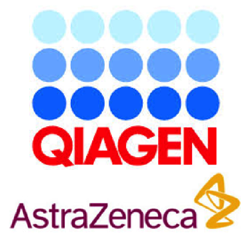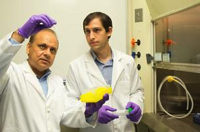

Montgomery County, MD DED Tech Transfer Programs Monthly Event – Second Wednesday of every month: 3:30 PM to 5:00 PM (EDT) Germantown, MD


Montgomery County, MD DED Tech Transfer Programs Monthly Event – Second Wednesday of every month: 3:30 PM to 5:00 PM (EDT) Germantown, MD


Innovators and startups pride themselves on being creators of disruptive technologies. We expect them to introduce game-changing solutions that improve our quality of life and enable administrations to govern better.
But the journey from innovative solution to government adoption is far from easy and can seem impossible for smaller companies with cutting-edge technologies.
Image: http://www.statetechmagazine.com


Qiagen has agreed to partner with AstraZeneca to develop a liquid biopsy-based companion diagnostic test to accompany one of the pharmaceutical company’s lung cancer drugs.
Building on a master framework agreement signed by both companies in 2013, the partnership will involve the creation of a diagnostic test that analyses plasma samples to assess EGFR mutation status in non-small cell lung cancer patients.


The healthcare system in the U.S. is a slow-moving, slow-changing beast, but it’s also riddled with inefficient parts that beg for data-driven reinvention. That’s created huge opportunities for startups — and some of them are already seeing the payoff. The Affordable Care Act and accompanying legislation like the HITECH Act have lit a fire under the movement to rethink they way we deliver and pay for healthcare. Accordingly, investment in the digital health space has accelerated in 2014; at the end of June it totaled $2.2 billion, already exceeding 2013’s total funding just halfway through the year.

According to the latest research out of Johns Hopkins, a new blood test could predict a person’s risk for suicide through their DNA. The blood test would rely on genetics and offer many who are afflicted with mental illness and their doctors a new option in detecting suicidal behavior.


Johns Hopkins researchers Aleksander Popel and Jordan Green knew their research could serve a greater purpose outside their laboratory. But without any business experience, they knew they couldn’t do it alone.
With help from Hopkins’ tech transfer office and the Maryland Innovation Initiative, a state grant fund that invests in research projects with commercialization promise, the pair’s biomedical research is now a company — AsclepiX Therapeutics. The company is developing a better way to treat eye conditions caused by blood vessel abnormalities. Macular edema, which is common among people with diabetes and can lead to blindness, is an example.
Image: Jaclyn Borowski – At left, Niranjan Pandey, senior director of research and development, and Eric Bressler, research specialist, work in the lab at AsclepiX Therapeutics.


Report: “Safe Science: Promoting a Culture of Safety in Academic Chemical Research”
Author: Committee on Establishing and Promoting a Culture of Safety in Academic Laboratory Research
Organization: National Research Council
Summary: The National Research Council formed a panel of university lab-safety experts after a series of campus accidents, including several deaths, emphasized that academic labs have a far worse safety record than their corporate counterparts do.


Regardless of your stance on Obamacare and Maryland’s Medicare waiver, you can’t ignore that health reform and technology are creating many opportunities for innovation. The BBJ is looking for those innovators. Please click below for contest information.


For years the standard operating procedure for the medical device world has been: Bring good tech to patients and be rewarded by the market. Healthcare reform and particularly the consolidation of doctor practices is making this model obsolete. Now the challenge is more along the lines of “Justify your existence.”
Device companies have to revamp the traditional business model to show how their products save money and help patients in the long term.
Image: http://medcitynews.com


Genome scientist and entrepreneur J. Craig Venter is best known for being the first person to sequence his own genome, back in 2001.
This year, he started a new company, Human Longevity, which intends to sequence one million human genomes by 2020, and ultimately offer Web-based programs to help people store and understand their genetic data (see “Microbes and Metabolites Fuel an Ambitious Aging Project”).
Image: http://www.technologyreview.com – J. Craig Venter